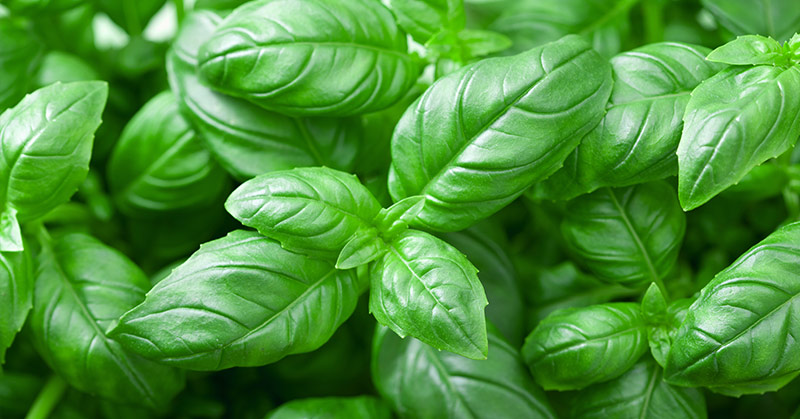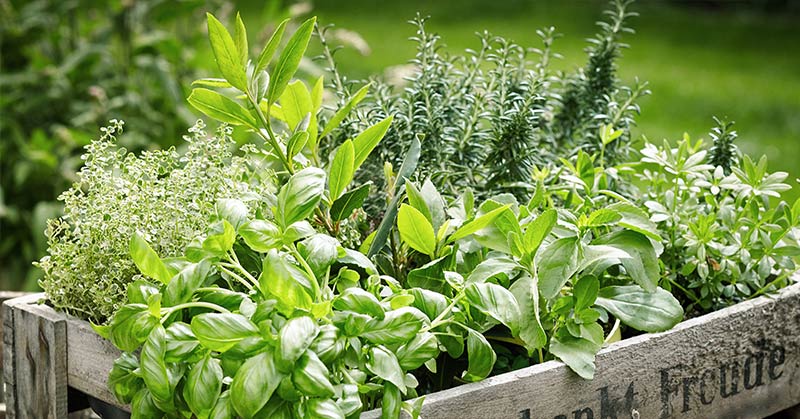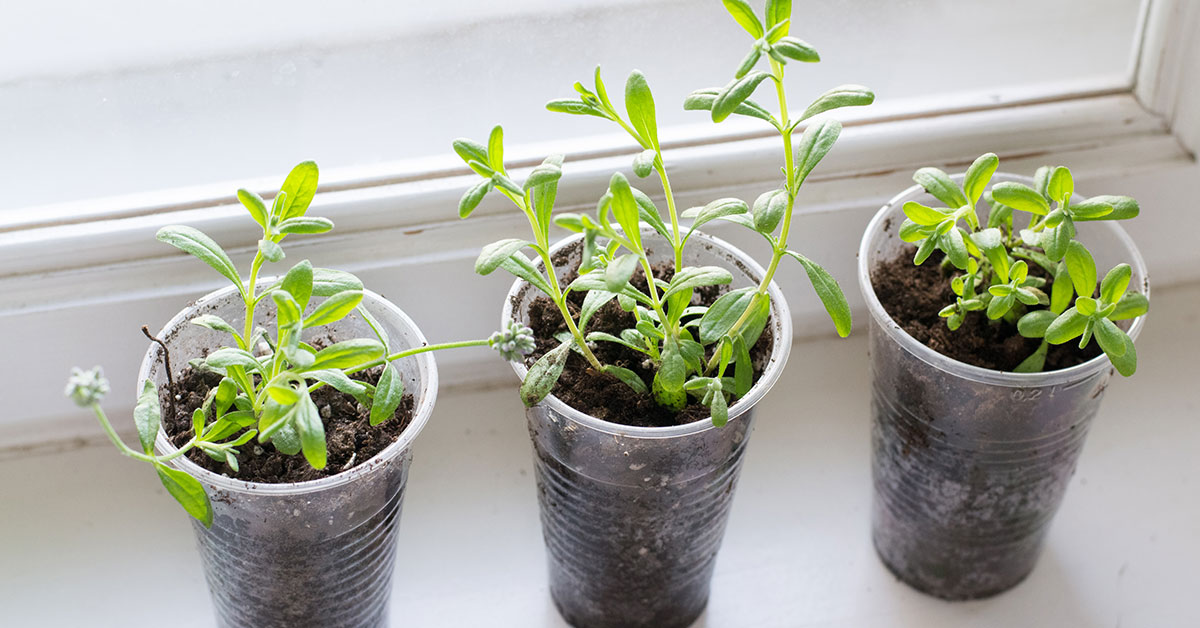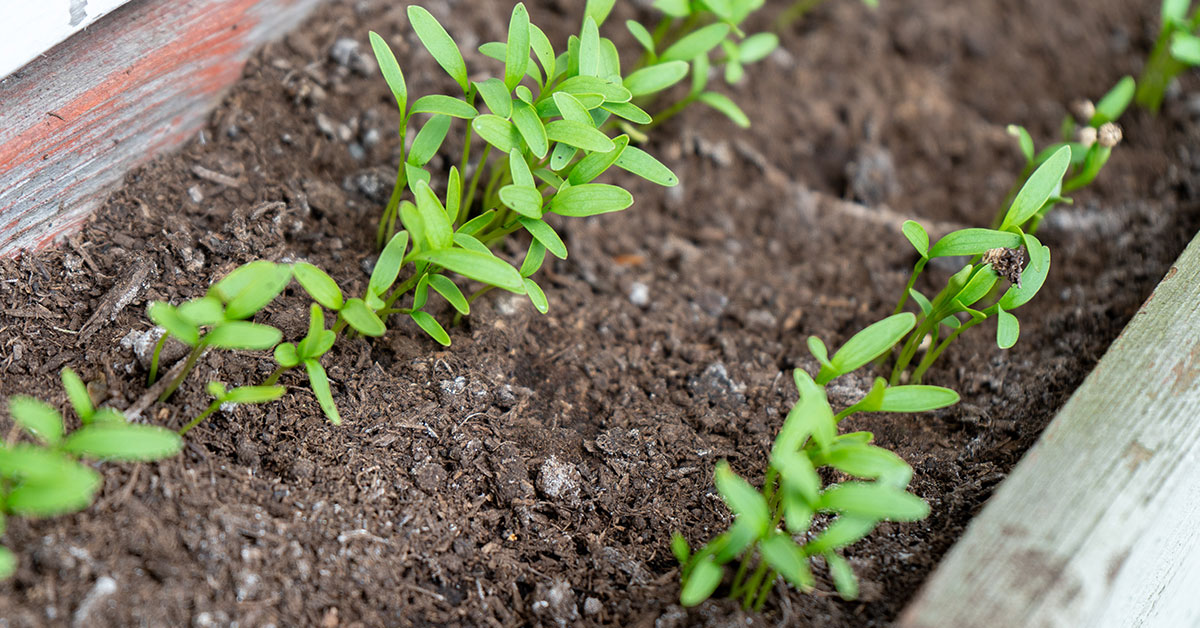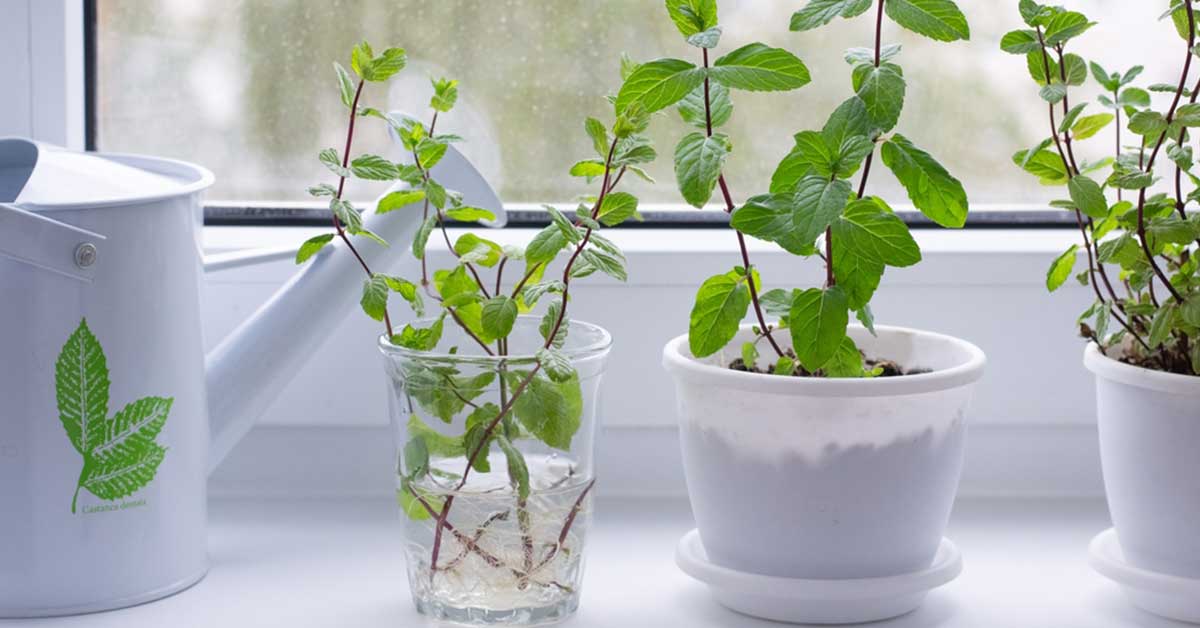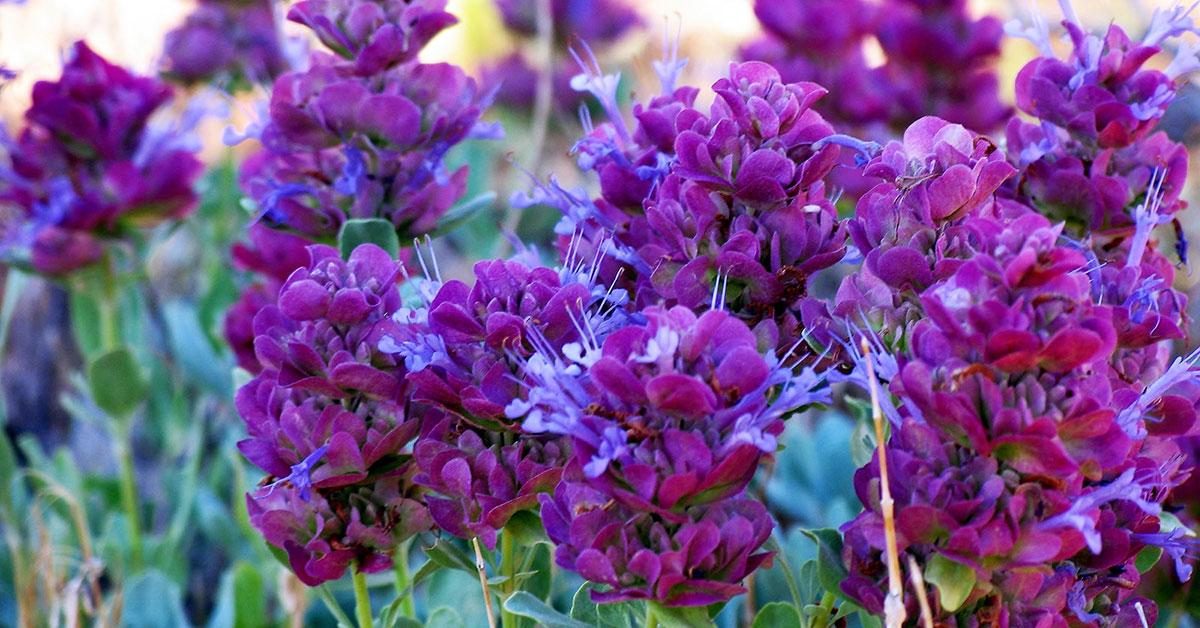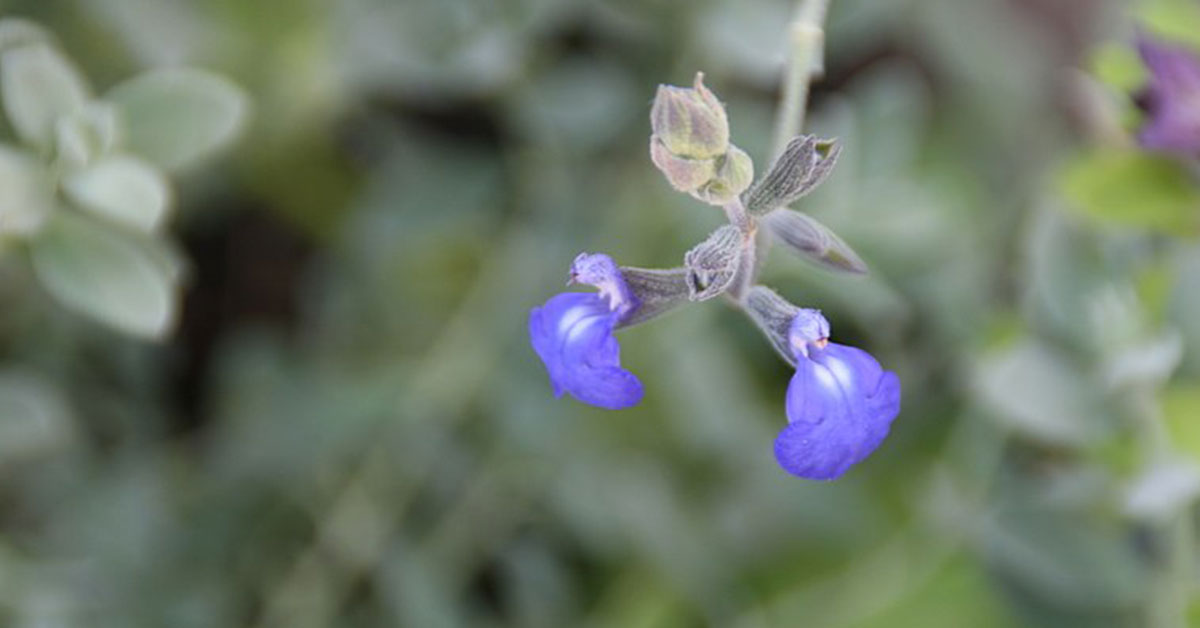Basil is a culinary herb that’s at the heart of Italian cuisine, and it’s also the base of most varieties of pesto. There may be a discrepancy in how to pronounce it (“bay-sil” or “bah-sil”) but there’s no denying it’s delicious aroma. Although sweet basil may be the most famous of its kind, there are many different cultivars. In this article, we’ll talk about how to grow basil for an awesome harvest all summer long.
Whichever variety you choose to grow, basil plants will keep on giving. Unlike a crop of beets and radishes which end after the harvest, basil will continue to produce for months if they are treated well. Best of all, basil is easy to grow once you get the hang of it.
What is Basil?
Basil is a fragrant, tender annual herb that produces large, flat, round leaves and spikes of flowers that numerous pollinators visit for food. Basil is a commonly used herb and is delicious on numerous dishes. A little more about Basil:
Latin name: Ocimum basilicum
Other names: Albahaca, Basilic, Basilic Commun, Basilic Grand, Basilic Grand Vert, Basilic Romain, Basilic aux Sauces, Basilici Herba, Basilici Herba, Common Basil, Garden Basil, Krishna Tulsi, Munjariki, Ocimum basilicum, St. Josephwort, Surasa, Sweet Basil, Vanatulasi, Varvara, Visva Tulsi.
Native to: India
Invasiveness: No
Tenderness: Annual
Sun: Full Sun
Water: 1 inch weekly
Soil: Nutrient-rich, moist, well-drained soil
Hardiness zone: Zones 10-11, annual elsewhere
When to plant: 2 weeks after last spring frost
Spacing: 12-16 inches
Plant height: 6–12 in.
Bloom period: Summer
Time to maturity: 3-4 weeks
Container friendly: Yes
Fertilizer: 10-10-10 every 2-3 weeks
Toxicity: Non-toxic
Deer resistant: Yes
Pest resistant: No
How To Grow Basil
Basil plants prefer warm weather although they can tolerate higher heat. They require well-drained but moist soil, rich in nutrients and with a pH of 6-7. Choose the area to plant them accordingly, whether you pick a spot in a garden or in a windowsill gardening box. The area should be able to get full access to direct sunlight for a minimum of 8 hours daily.
Wait for warm weather before planting the basil seeds. Trying to jumpstart these plants will just be a waste of seeds. If you want to get the gardening started early, use a grow light and a heat mat to grow them indoors to ensure the soil temperature is warm enough before you transport the seedlings into the outdoor garden.
Water the basil plants regularly and deeply, and dress with compost or aged manure. Basil plants vary in height but most grow to about one or two feet tall.
When to Harvest Basil
These guidelines are applicable to indoor-grown basil, but they won’t need to be trimmed as often since they usually won’t grow as quickly as outside in a sunny garden.
The best part of harvesting basil is that you can harvest leaves whenever you need to cook with them. Ensure this happens often to prevent the plant from flowering. Pruning the leaves regularly will allow the plant to generate more leaves that you can enjoy all summer long.
If you do see flower heads forming, pinch them off to prevent the plant from putting energy into producing seeds, instead of producing more leaves.
Prune the basil by using scissors to snip off the upper leaf clusters close to the set of leaves below it. If you don’t have scissors, just pinch the basil off with your fingers. New growth will sprout from the point of the cut, continuing to grow basil throughout the season.
Prune at least once a week or every two weeks. If your plant is healthy, it will produce a lot of leaves and stems, so stock up on basil recipes!
Storing Fresh Basil
If you have a basil plant, my recommendation, in general, is to only harvest as much as you need and allow the plant to continue to grow. If you’ve purchased or been given some basil branches, that isn’t really an option! The simplest way to store fresh basil is to simply place the base of the stems in a glass of fresh water. Some sites recommend covering the basil stems with plastic, but I prefer a plastic-free kitchen and don’t see much of a difference between covered vs. uncovered. Basil should stay fresh for about a week using this method.
How To Dry Basil
As the growing season comes to a close, you’ll want to harvest all of your basil to prevent any of it from going to waste. Fresh basil will only keep for about a week, so drying basil becomes necessary if you want to preserve it long term. It’s a pretty simple process, here’s how to do it:
- Wash your basil. You don’t want to accidentally include any insects or dirt during the drying process!
- Remove all leaves from their stems
- Preheat your oven to its lowest setting, preferably under 180 degrees Fahrenheit
- Spread your basil leaves on a baking sheet, making sure not to overlap them
- Bake your leaves for 2 hours and 30 minutes
- Alternatively, you can use a food dryer for this. Doing so will be more efficient and save energy and money.
Harvesting Basil Seeds
If you had a successful harvest, save some seeds to plant for next year. Here’s how: Designate one basil plant as your seed producer. Avoid pruning it and allow it to flower until those flower heads turn into seeds. Allow the seeds to brown while they are on the plant.
If the rainy weather threatens the seeds, clip them, and bring them indoors to dry out. Pull the dry seed pods from the stem and remove the small black seeds from the pods. Seal the fully dried seeds in a paper envelope and store in a cool, dry environment until the warm weather arrives next year.
The Different Varieties of Basil
There are numerous kinds of basil to plant depending on your taste preferences. Here are a few to choose from:
Sweet Basil
Sweet basil is the go-to variant. If a recipe calls for just ‘basil,’ it’s referring to this kind. The dark green leaves have a sweet but slightly spicy taste.
Thai Basil
Thai basil has a bold spicy flavor reminiscent of licorice. The leaves are small and narrow alongside pretty purple blossoms. Thai basil does well in high-temperature cooking, such as in stir-fries.
Holy Basil
Holy basil got its name for being a sacred plant in Hinduism. It’s in many Thai dishes like pad kra pao. It’s bitter when raw, so ensure you cook it to enjoy it in recipes.
Lemon Basil
This version of basil is sweet with a strong lemony scent. It goes well with grilled veggies or fish and chicken recipes.
Purple Basil
Purple basil leaves are purple in color, as so named, with large leaves. They have a strong clove aroma with less sweetness than other varieties. It’s best used in salad, pesto, or other recipes with fresh basil since the leaves turn an unappetizing black shade when heated.
